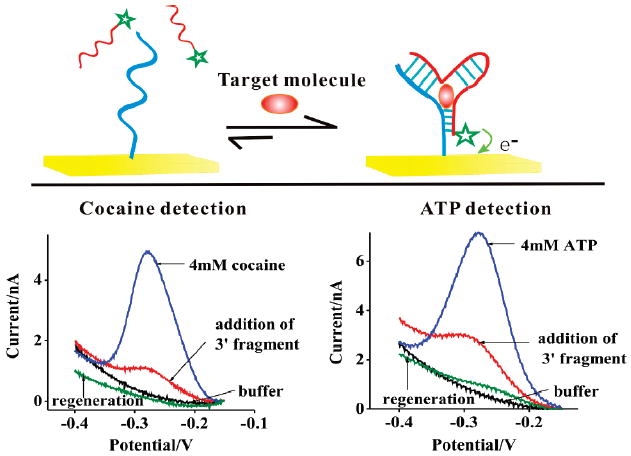Figure 1.

Here we demonstrate a new, electrochemical sandwich assay approach based on single aptamer sequences and capable of detecting small molecule targets. (Top) The sensor is predicated on the observation that, when split into two fragments most, if not all, aptamers will dissociate. Target binding, however, will stabilize their associated, native conformation, leading to a large increase in faradaic current when target is present (Bottom). To demonstrate this approach, we have fabricated sensors against the targets cocaine and ATP. In the absence of the methylene blue modified 3′ fragment, neither sensor exhibits any significant faradaic current. After addition of the relevant methylene blue modified 3′ fragment a small faradaic current is observed, presumably due to interactions between the two fragments that occur even in the absence of the target. After addition of the specific target molecule, however, we observe an ~600% increase in faradaic current for the cocaine sensor and an ~400% increase for the ATP sensor (both targets at 4 mM). As shown, both sensors are readily regenerated via a 30 s rinse with distilled, room-temperature water.
